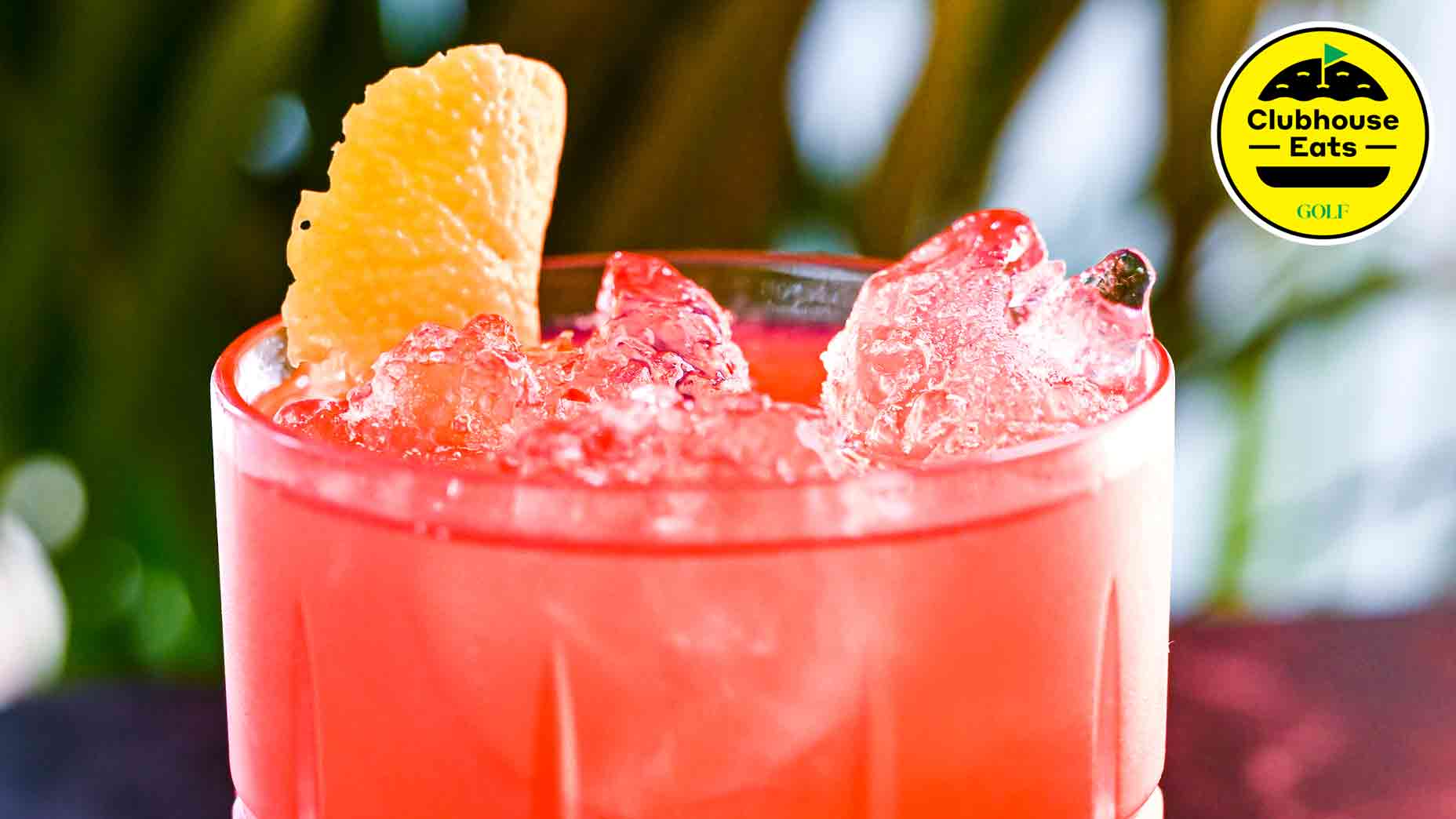These days, it seems there’s an “official” everything for sports teams and events. Moët & Chandon, for example, is the official Champagne of the Los Angeles Lakers, if you didn’t know. However, such is not the case at The Masters; although there is one libation — the Azalea — which has earned the status of being the unofficial drink of first major championship of the year.
While a popular menu item on the grounds of Augusta National during Masters Week each April, the cocktail reportedly isn’t mixed, served, or even requested much at the club at any other point during the year. Nevertheless, Augusta National is guarded about the Azalea’s recipe, which has left outsiders speculating about the ingredients and ratios for years.
Google “Azalea cocktail” and you’ll find plenty of suggested recipes, most of which are similar, at least in terms of their ingredients. (Gin or vodka, pineapple juice, lemon juice and grenadine are general staples). In the hopes that we could offer you the best possible roadmap to making your own Azalea this Masters Week, we decided to test out some of those recipes. Here’s what we learned:
- Most recipes suggest using either vodka or gin as the foundational spirit. We preferred gin. Vodka limits the drink’s complexity and depth of flavor. More specifically, when mixing this drink with vodka, the source of the cocktail’s flavor is limited to the requisite pineapple and lemon juices, which produces a much-too-tart finished product.
- Don’t worry if you don’t like gin, since much of the spirit’s character is swallowed up by the fruit juices’ tartness. That said, a touch of the gin’s juniper flavor emerges on the back end of the palate, which prevents the cocktail from being too one-dimensional (i.e., tart).
- London Dry style gin is the way to go. Sweeter and more aromatic gins, such as Gray Whale, Plymouth, and Old Tom styles, weren’t powerful enough to counterbalance the tartness of the lemon and pineapple juice.
- A 2:2:1 ratio works best — two parts gin, two parts pineapple juice, and one part lemon juice. But we found that adding at least half an ounce of simple syrup (up to one full ounce), along with the requisite splash of grenadine, provided the necessary sweetness to round out the cocktail and make it more palatable.
- The recipe used at The Willcox Hotel in South Carolina was intriguing — at least on paper. Comprised of 3 ounces of gin, 1 ounce of lemon juice, and 1 ounce of pineapple juice, the hotel’s rendition drinks too boozy. That said, those may be the specs you want the bartender at the halfway house to use if you’ve just made a mess of the front nine and need a good slap in the mouth (or something to numb the pain).
As far as other Azaela cocktails go, the Azalea Margarita equally evokes the flavors of spring — and the presumed flavors of Augusta National — but the herbaceous quality that the tequila brings to the party actually makes this margarita a more successful libation than the classic Azalea cocktail (at least in this author’s humble opinion). We’ve shared the recipe below:
Stock up on GOLF’s exclusive Azalea collection before it sells outBy: Jessica Marksbury
Azalea Margarita
1.5 oz. blanco tequila
0.5 oz. orange liqueur (Clement Creole Shrub works well)
1 oz. Pineapple juice
0.5 oz. Lime juice
0.5 oz. Grenadine
Combine all ingredients in a cocktail shaker filled with ice and shake well to chill. Strain into an ice-filled rocks glass.
Similarly, if you’re looking for a drink that subtly tips its cap to spring (not to mention Augusta National’s floral beauty), we recommend stirring up a martini-like libation with Wonderbird Spirits’ No. 97 Magnolia Experimental Gin (recipe below).
True to its name, the spirit features a botanical recipe that includes magnolia flowers. “We go around Oxford [Mississippi] in late May and politely ask folks if we can hit their backyards for a few magnolia blooms,” explains the brand’s founder and principal, Rob Forester. “Three weeks later, we bottle this gin.”
Magnolia gin martini
2.5 oz. gin
.25 oz. Saint Germain Elderflower Liqueur
.25 oz. Massenez Crème de peche
Combine all ingredients in a mixing glass, add ice, and stir for at least 20 seconds. Strain into chilled coupe.
The resulting cocktail delivers bold peach flavors upfront, which transition to an evolving progression of floral notes. The elegant cocktail finishes clean with a sweet floral character that truly tastes like spring in a glass.
Latest In Lifestyle

Golf.com Contributor










